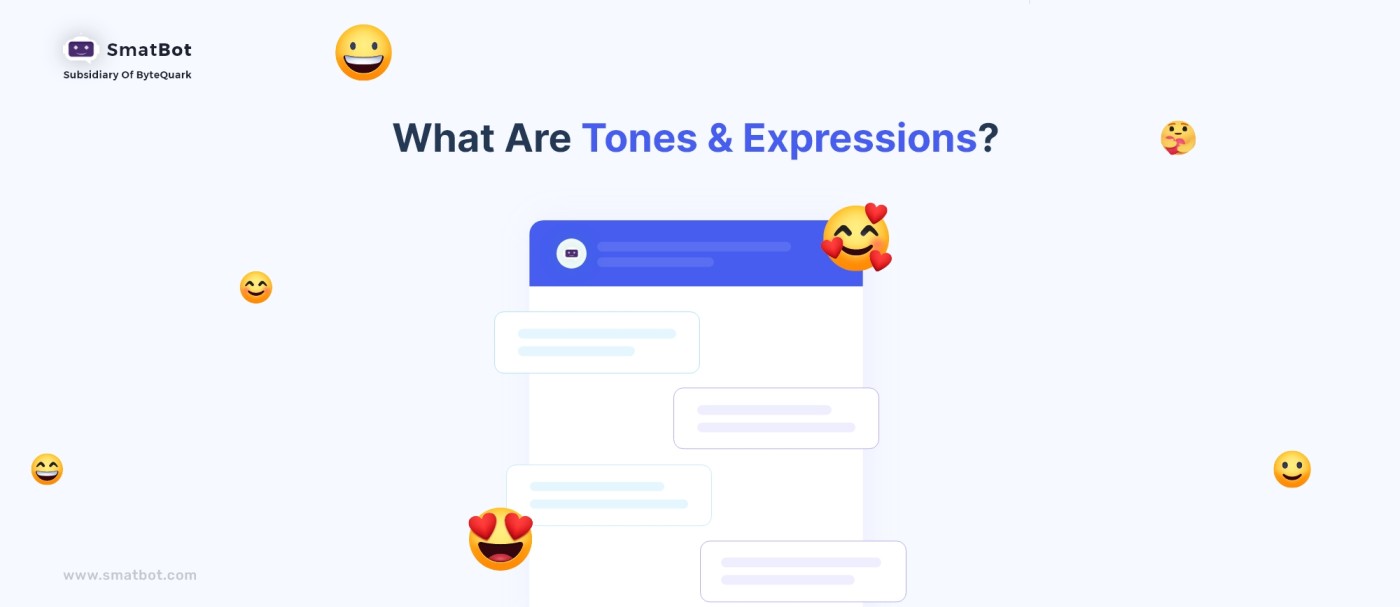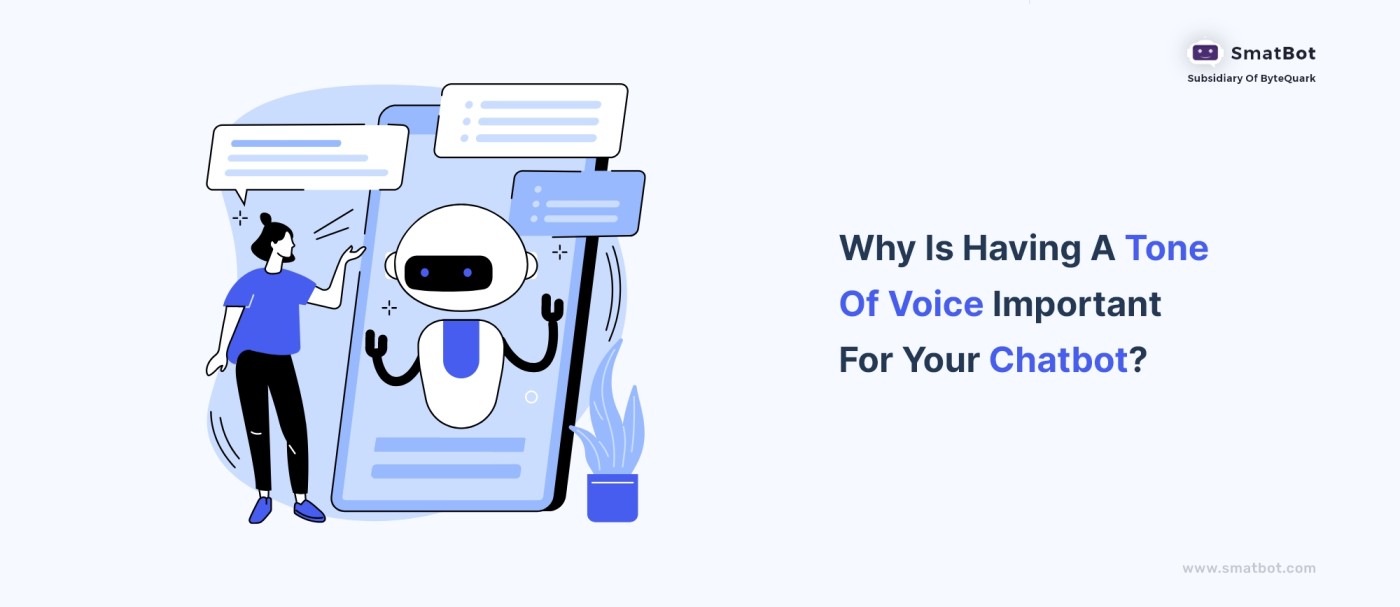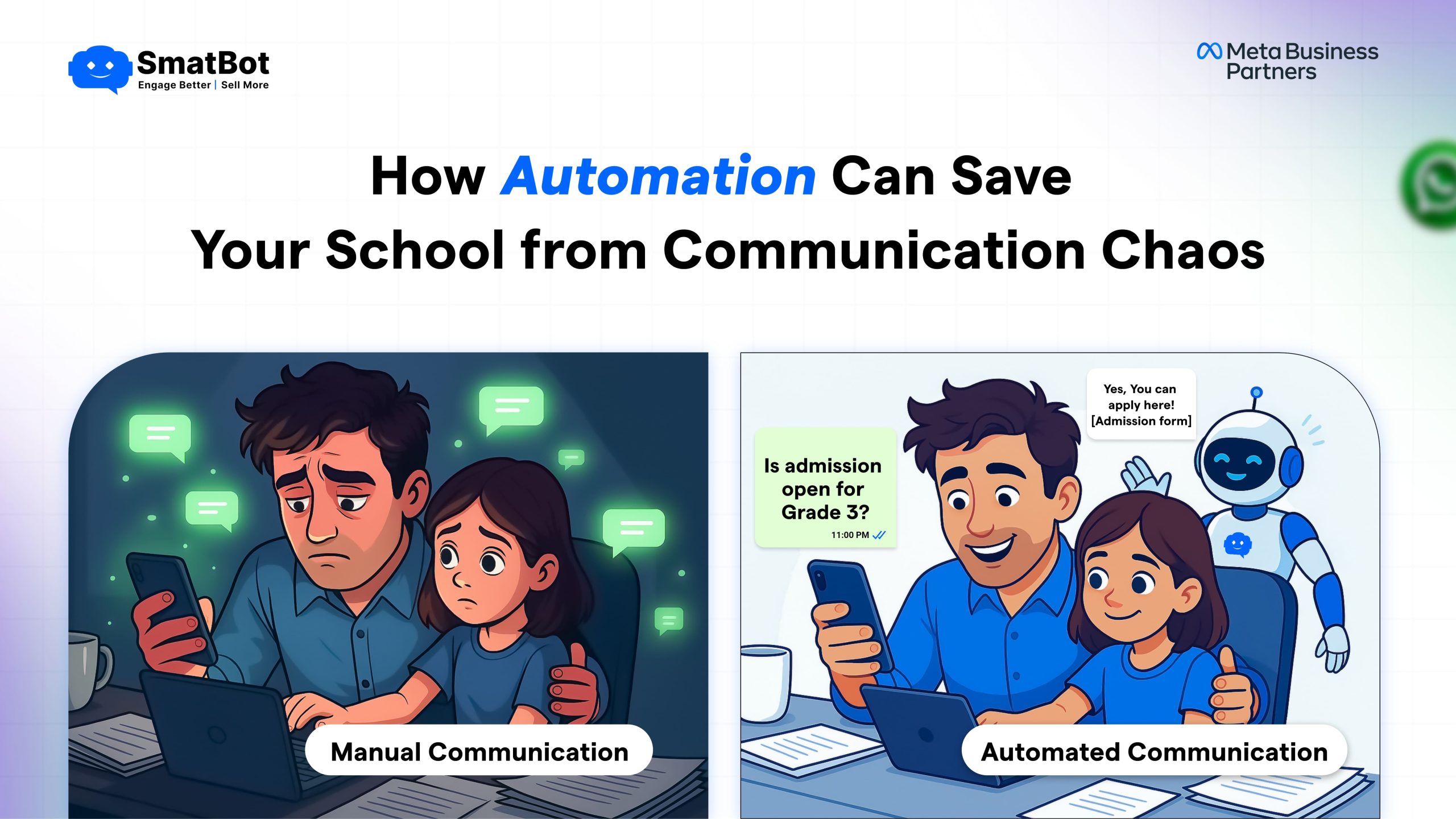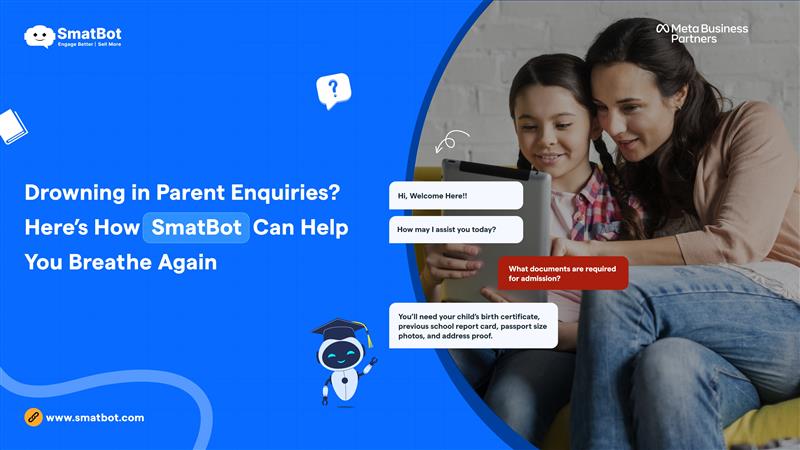Unveiling the Value: Analyzing Tone & Expression in Chatbots

In today’s era of technology, we have witnessed a transformation in how businesses operate. The traditional approach to customer support where phone calls were the means of communication has now given way to a landscape where live chat and AI-powered chatbots play a crucial role.
These live chatbots are remarkable for their ability to address customer inquiries promptly. However, it is no longer enough to focus on speed to ensure customer satisfaction. Emotion detection in AI chat is essential to building strong customer relationships.
Yes, you heard that right. Emotional expression in chatbots can be a tool for fostering meaningful customer relationships. If you are curious about the ability to analyze tone and expression in chatbots, then you should read this article.
In this article, we will reveal every crucial aspect of chatbot tone analysis. We will also see the importance of analyzing the tone in chatbots. By the end of this article, you will have a complete understanding of emotional expression in chatbots.
So, without further delay, let’s begin our journey of unveiling the value: analyzing tone & expression in chatbots.
What Are Tones And Expressions?

Expression and tone are crucial features of chatbots powered by LLM models. Expression of emotion detection in AI chat guides the message tone, especially for the customer service agent, during a live chat interaction. The primary goal of chatbot tone analysis is to provide your customers with a tool that accurately assesses and adjusts the emotional tone of their messages in the conversation.
Tones and expressions are sentences or phrases that your bot can understand. They are what you or your customers want to convey. Expressions are grouped into intents and comprise your bot’s entire knowledge base. Your bot’s ability to comprehend user input more precisely increases with the number of expressions it has.
In contrast, tone is the next level of analyzing chatbot communication. This feature defines how your brand communicates with your customers or potential customers. It’s about establishing the ideal way of communication that resonates best with your target audience. Careful language and expression selection are crucial in achieving this.
Whether you aim to be more or less emotive, incorporate emojis or maintain a neutral tone, your brand’s tone should be unique to you or your customers. The effectiveness of your brand tone depends on your research and understanding of customer expressions.
By leveraging LLM and artificial intelligence, we recommend choosing an appropriate tone that enhances the overall sentiment and experience for both agents and customers.
How Do They Work?
Now that you have a basic understanding of chatbot tone analysis, you might be wondering how the process of analyzing tone & expression in chatbots works.
The process of sentiment analysis in chatbots involves several steps. This includes understanding the exact meaning of the word and the sentence structure, as well as being able to handle idiomatic slang and expressions. Chatbots also have the capability to detect and classify positive, neutral and negative sentiments within conversations.
Chatbots perform real-time analysis of chatbot communication prompted by specific punctuation cues when creating messages within the live chat session. If the messages remain unsent the AI-enabled chatbots can evaluate the conversational AI tone upon sending.
The best part about the chatbot capabilities of analyzing chatbot communication is that this technology lets administrations establish a distinct brand tone for the platform users. If a composed message deviates from the brand’s tone, the user will receive a suggestion to adjust the tone. Users can seamlessly switch the tone to coordinate with the brand’s established tone with just a couple of clicks.
Why Is Having A Tone Of Voice Important For Your Chatbot?

Currently, many businesses and companies use live chat or chatbots equipped with the ability to analyze chatbot communication. We are sure you know the importance of standing out in the competition. Developing a brand tone of voice or conversational AI tone will help you set yourself apart from competitors.
The following are the top reasons for setting your tone of voice in AI responses:
- Consistency for a Clear Brand Image: Usually, customers expect a clear and consistent brand image. Using a formal tone for one interaction and an informal tone for another can be confusing. A consistent tone or human-like chatbot responses helps potential and current customers better understand your brand, fostering a closer relationship between your company and its customers.
- Differentiation in a Crowded Space: As mentioned above, numerous companies use chatbots for customer service. A brand tone will help you differentiate yourself from other companies using chatbots. Human-like chatbot responses will allow regular customers to recognize you among the millions.
- Boosting Revenue through Brand Consistency:: The tone of voice in AI responses can also help you increase the company’s overall revenue because brand consistency can also lead to brand growth. As per stats, 68 percent of companies report that brand consistency contributed 10% to 20% of income growth.
- Engaging Your Audience: Your conversational AI tone is pivotal when you wish to connect with your audience. This tone is responsible for how people perceive your brand.
- Enhancing Engagement and Interest: The tone and chatbot response sentiment can make conversations more exciting and engaging. The more your clients or customers interact with the bot, the more likely they will complete the process.
Advantages of Tone And Expressions
Most people believe tone or sentiment in a chatbot is unnecessary because these elements provide no benefit. However, the truth is that chatbot response sentiment carries numerous advantages.
Here are the top benefits of sentiment analysis in chatbots:
- Accurate sentiment
Humans find it difficult to predict the exact feeling or sentiment at the start of a conversation. This is the most crucial thing to do to build a relationship with the customer. If you fail to understand the exact sentiment, you will likely lose your regular customers.
Sentiment analysis in chatbots can help you understand the exact sentiment of your customers. Chatbots have the capability to gauge the current mood of your customers, determining whether it is positive, negative, or neutral. Based on this data, you can offer accurate responses that can delight your customers.
- Improve customer experience
Every company or business enters the market intending to delight existing or potential customers. However, most customers use customer service when they are dissatisfied with the company or industry. When customers are unhappy, it can be challenging to make them happy again.
When customers are unhappy, they tend to use negative and angry words when talking to chatbots. These conversations provide valuable clues about their feelings. Chatbots with emotional programming develop vital insights and data to address their negative sentiment.
With the help of chatbot empathy analysis methods, you can understand your customers’ needs, complaints, and desires. This understanding helps you determine how best to assist them and take appropriate action.
Let us illustrate with an example: If a customer is upset, chatbots equipped with empathy analysis can transfer the conversation to a live human agent to provide a more human touch.
Through the use of emotional chatbot programming, chatbots can offer your customers or clients a more personalized experience. This technology can help you understand your customers’ feelings and exact needs. By comprehending these insights, you can create a friendly and reliable environment for them to interact and engage more.
In summary, chatbots with emotional intelligence in AI can empower human agents with real-time guidance on emotional tone, fostering relatable conversations. Moreover, this leads to increased customer satisfaction and loyalty.
- Reduced misunderstanding
As mentioned earlier, traditional chatbots and humans often struggle to fully grasp a customer’s tone or exact sentiment, resulting in potential misunderstandings.
However, chatbots equipped with natural language processing and emotion recognition capabilities can effectively prevent such misunderstandings during communication. Their ability to accurately interpret tone leads to smoother interactions and reduces customer dissatisfaction.
- Monitor brand reputation
If you are running a business or company, monitoring brand reputation is crucial to your success. With the help of natural language processing and emotion recognition, chatbots enable you to gain insights into your products or services, your customers’ thoughts, and their feelings about your brand.
By incorporating language tone recognition in bots, chatbots empower you to proactively manage your brand’s reputation and devise new strategies for its improvement. For instance, you can program your chatbot to solicit feedback and better understand what customers think about your brand.
- Faster issue resolution
“When it comes to resolving issues, human or live customer support agents often take too much time because they struggle to understand the customer’s exact sentiment. This problem leads to increased frustration for the customer. Remember, a frustrated customer may stop using your services or products.
Chatbots can help you reduce customer frustration through the use of chatbot interaction analysis. Chatbots equipped with interaction analysis capabilities facilitate empathetic communication and expedite issue resolution. When a solution is presented with an appropriate tone, it tends to elicit a positive response from every customer.
Tips on Creating a Chatbot With a Tone and Expressions
So far, we hope that you have understood the importance of chatbots equipped with emotional cues in AI conversations. You might be considering developing your chatbots with these emotional cues. However, creating a chatbot with expressive algorithms is not as easy as you might think. You must consider a few tips when designing a chatbot’s tone and expressions.
Here are the top tips that will help you create a chatbot with emotional cues in AI conversations:
- Identify your core value.
When it comes to shaping a chatbot’s personality or the personality of virtual assistants to align with the tone and expression of your brand, well-established brand values and missions are crucial. If you want to identify the core brand values, you must answer the following questions:
- Why do you want to imbue virtual assistants with a personality?
- What message do you want to convey to your audience?
- What is your primary goal in establishing a chatbot communication style or tone?
After finding the answers to the above mentioned queries, you will get a clear view of what tone of voice you should use in your chatbot to highlight your uniqueness.
- Choose a tone that reflects the personality of your chatbot.
Your chatbot’s communication style reflects its personality, character, and attitude. Your chatbot’s tone should be distinctive, unique, and consistent to enable users to recognize it. If you are looking to select a voice for your chatbot, you can draw inspiration from traits that describe your brand’s personality. You can also consider using examples from characters, existing chatbots, or celebrities.
- Test and iterate your chatbot’s tone
Your chatbot’s voice and tone are not fixed; they are dynamic and ever-evolving. A chatbot equipped with language analysis needs to be regularly tested and fine-tuned to align with your customers’ needs and expectations. To assess your chatbot’s language analysis capabilities, you can use various methods and sources, such as reviews, surveys, or interviews, to gather and evaluate user feedback.
Conclusion :
As the business world moves toward the digital era, using chatbots that can analyze tone and expression is no longer a trend but a requirement. This shift has occurred because it helps businesses keep their customers satisfied. We hope our article, ‘Unveiling the Value: Analyzing Tone & Expression in Chatbots,’ was helpful to you.
If you are looking to incorporate expression into your chatbot interactions, we highly recommend trying out SmatBot. SmatBot’s impressive real-time expressions and tone features significantly enhance live chats, creating better customer experiences.
Furthermore, SmatBot allows you to engage customers more effectively. So why wait any longer? Seize the opportunity today to request a demo with us and elevate your customer support game.




